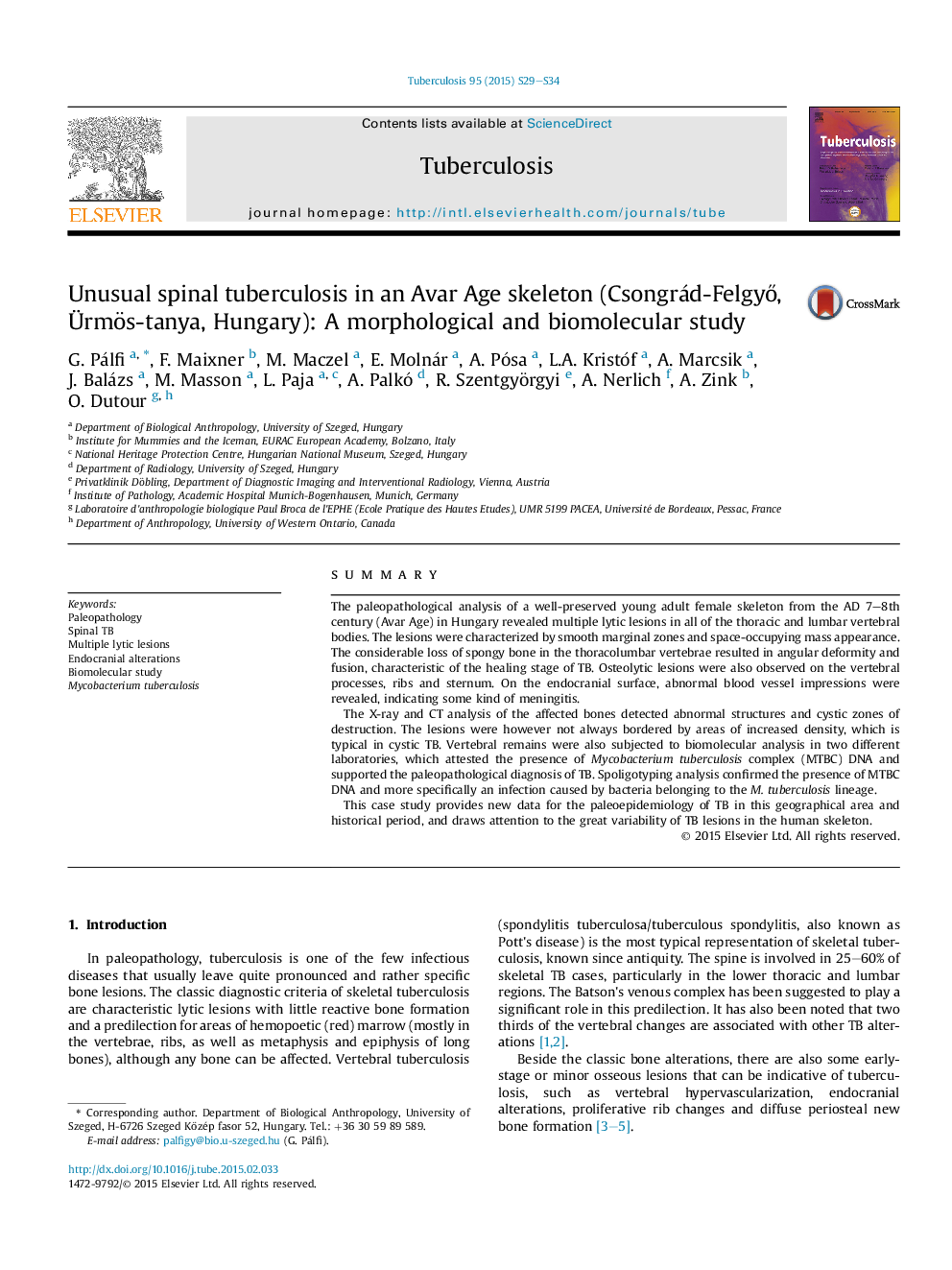| Article ID | Journal | Published Year | Pages | File Type |
|---|---|---|---|---|
| 2401464 | Tuberculosis | 2015 | 6 Pages |
SummaryThe paleopathological analysis of a well-preserved young adult female skeleton from the AD 7–8th century (Avar Age) in Hungary revealed multiple lytic lesions in all of the thoracic and lumbar vertebral bodies. The lesions were characterized by smooth marginal zones and space-occupying mass appearance. The considerable loss of spongy bone in the thoracolumbar vertebrae resulted in angular deformity and fusion, characteristic of the healing stage of TB. Osteolytic lesions were also observed on the vertebral processes, ribs and sternum. On the endocranial surface, abnormal blood vessel impressions were revealed, indicating some kind of meningitis.The X-ray and CT analysis of the affected bones detected abnormal structures and cystic zones of destruction. The lesions were however not always bordered by areas of increased density, which is typical in cystic TB. Vertebral remains were also subjected to biomolecular analysis in two different laboratories, which attested the presence of Mycobacterium tuberculosis complex (MTBC) DNA and supported the paleopathological diagnosis of TB. Spoligotyping analysis confirmed the presence of MTBC DNA and more specifically an infection caused by bacteria belonging to the M. tuberculosis lineage.This case study provides new data for the paleoepidemiology of TB in this geographical area and historical period, and draws attention to the great variability of TB lesions in the human skeleton.
